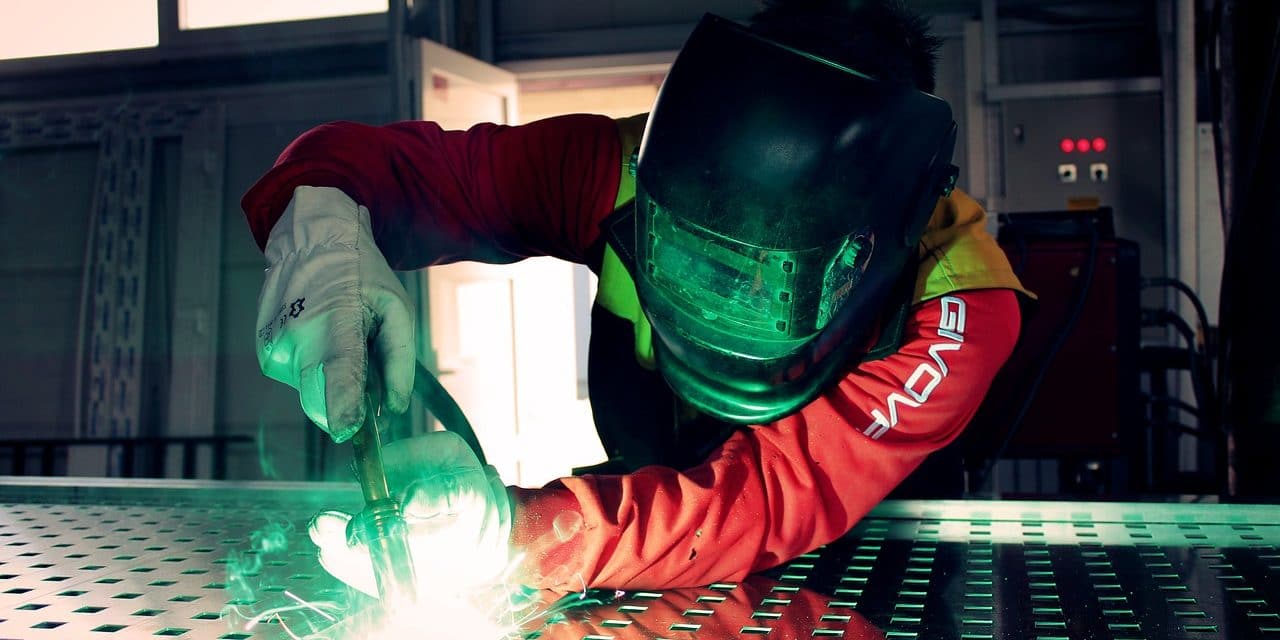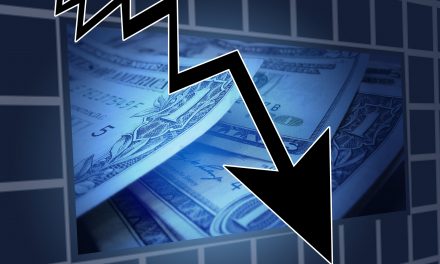Image by Emir Krasnić from Pixabay
Updated June 19, 2019 –
Regarding the Trump Administration’s efforts to reset the balance of trade with China to further create jobs, the jury is still out.
But there’s significant progress. The president’s policies have lowered the unemployment rate to 3.6 percent.
Reshoring is underway. Forty percent of manufacturers have moved their operations back to America from China and India, according to a 2012 study sponsored by the Council of Supply Chain Management Professionals.
For manufacturing jobs to return to America, the salient question: Will federal, state and local governments change public policy to take advantage of economic developments in China?
With China’s gross domestic product dropping sharply, reportedly to 7.5 percent, vehicle sales down 1.3 percent, labor shortages, and the second-largest economy experiencing a real estate bubble with lower sales prices – it would appear China’s economic problems are worse than expected.
Plus, a study by a world-class consulting firm offers hope to regions in the United States beleaguered by high unemployment – the firm predicts labor issues in China mean U.S. firms will be less inclined to offshore jobs.
As some U.S. states develop reputations as low-cost manufacturing centers and China’s wages increase, offshoring of jobs was expected to decline by 2016, according to an international consulting firm. That’s the essence of a 2011 study by The Boston Consulting Group (BCG).
The firm’s report: “Made in the USA, Again: Manufacturing Is Expected to Return to America as China’s Rising Labor Costs Erase Most Savings from Offshoring.”
As usual, BCG offers enlightening insights.
“With Chinese wages rising at about 17 percent per year and the value of the yuan continuing to increase, the gap between U.S. and Chinese wages is narrowing rapidly,” said the firm’s press release. “Meanwhile, flexible work rules and a host of government incentives are making many states—including Mississippi, South Carolina, and Alabama—increasingly competitive as low-cost bases for supplying the U.S. market.”
That’s thanks to a labor-shortage issue.
“All over China, wages are climbing at 15 to 20 percent a year because of the supply-and-demand imbalance for skilled labor,” said Harold L. Sirkin, a BCG senior partner. “We expect net labor costs for manufacturing in China and the U.S. to converge by around 2015. As a result of the changing economics, you’re going to see a lot more products ‘Made in the USA’ in the next five years.”
It’s a complex issue, but BCG further explained the rationale.
“After adjustments are made to account for American workers’ relatively higher productivity, wage rates in Chinese cities such as Shanghai and Tianjin are expected to be about only 30 percent cheaper than rates in low-cost U.S. states,” stated the press release. “And since wage rates account for 20 to 30 percent of a product’s total cost, manufacturing in China will be only 10 to 15 percent cheaper than in the U.S.—even before inventory and shipping costs are considered.”
Cost advantages in China will lessen
“Products that require less labor and are churned out in modest volumes, such as household appliances and construction equipment, are most likely to shift to U.S. production,” according to BCG’s Web site. “Goods that are labor-intensive and produced in high volumes, such as textiles, apparel, and TVs, will likely continue to be made overseas.”
Sirkin, who authored “GLOBALITY: Competing with Everyone from Everywhere for Everything,” advised U.S companies to examine all the labor costs.
“They’re increasingly likely to get a good wage deal and substantial incentives in the U.S., so the cost advantage of China might not be large enough to bother—and that’s before taking into account the added expense, time, and complexity of logistics,” said Sirkin.
BCG said the reversal has started.
“Caterpillar Inc., for example, announced last year the expansion of its U.S. operations with the construction of a new 600,000-square-foot hydraulic excavator manufacturing facility in Victoria, Texas,” the press statement indicated. “Once fully operational, the plant is expected to employ more than 500 people and will triple the company’s U.S.-based excavator capacity.”
Caterpillar acknowledged why.
“Victoria’s proximity to our supply base, access to ports and other transportation, as well as the positive business climate in Texas made this the ideal site for this project,” said Gary Stampanato, a Caterpillar vice president.
Two other companies change course
“NCR Corp. announced in late 2009 that it was bringing back production of its ATMs to Columbus, Georgia, in order to decrease the time to market, increase internal collaboration, and lower operating costs,” said the consulting firm. “And toy manufacturer Wham-O Inc. last year returned 50 percent of its Frisbee production and its Hula Hoop production from China and Mexico to the U.S.”
U.S. unions, of course, have been an obstacle.
“Workers and unions are more willing to accept concessions to bring jobs back to the U.S.,” noted Michael Zinser, a BCG partner who leads the firm’s manufacturing work in the Americas. “Support from state and local governments can tip the balance.”
Mr. Zinser said U.S. executives need to look a bigger wage-cost picture.
“If you’re just comparing average wages in China against those in the United States, you’re looking at the problem in the wrong way,” Zinser cautioned. “Average wages don’t reflect the real decisions that companies have to make. Averages are historical and based on the country as a whole, not on where you would go today.”
Another factor is labor shortage.
“In the U.S., we have highly skilled workers in many of our lower-cost states. By contrast, in the lower-cost regions in China it’s actually very hard to find the skilled workers you need to run an effective plant,” added Doug Hohner, another BCG partner who focuses on manufacturing.
China will continue as a major player in manufacturing U.S. products, but Mr. Hohner offers these forecasts:
- First, investments to supply the huge domestic market in that nation will continue.
- Second, in the absence of trade barriers that prevent offshoring, Western Europe will continue to rely on China’s relatively lower labor rates since the region lacks the flexibility in wages and benefits that the U.S. enjoys.
- Third, even though other low-cost countries—such as Vietnam, Thailand, and Indonesia—will benefit from companies seeking wage rates that are lower than China’s, only a portion of the demand for manufacturing will shift from China. Smaller low-cost countries simply lack the supply chain, infrastructure, and labor skills to absorb all of it.
Public policy
My sense is the big question is whether government will start doing the right thing in public policy? Oops, that goes for unions, too, and the ostensible political motivations of the National Labor Relations Board (NLRB).
“I don’t make jokes. I just watch the government and report the facts.”
-Will Rogers
A brouhaha comes to mind – those issues over Boeing launching a manufacturing plant in South Carolina. For years, state government and union political activity gave the aerospace giant no option, but to look for a better locale-alternatives to build the 787 Dreamliner.
You’ll recall the disingenuous complaint by the National Labor Relations Board against Boeing. It took months to settle.
So we don’t forget, here was the issue:
An editorial, “The right way to win Boeing jobs for Washington state” in a Tacoma, WA newspaper, The News Tribune, made a salient comment: “The NLRB complaint – which alleges that Boeing retaliated against its workers for striking when it choose to expand in South Carolina rather than Washington – appears to be little more than an attempt to assuage battered union interests.”
In a similar editorial, “NLRB complaint against Boeing needs critical look,” The Seattle Times cited President Obama’s rhetoric about generating jobs.
“Really a president does not create manufacturing jobs. He creates policies that may encourage companies to create jobs — companies like Boeing, which has now had the creation of 1,000 jobs in South Carolina second-guessed by Obama’s National Labor Relations Board,” wrote the editorial writers.
“In its complaint, the NLRB is attempting to reverse a U.S. investment by the nation’s No. 1 exporter 17 months after the company decided to make it — after the money has been spent, after the equipment is set up and after 1,000 workers have been hired. In South Carolina, assembly of the first 787 is scheduled to begin this summer. For the government to demand now that the company move everything to another state shows no sense of practical reality,” the newspaper asserted.
Let’s hope the trends remain positive and BCG was right. But more than political rhetoric, we need competence in government. If the right public policies are implemented, political and economic liberties will improve for everyone – not just the unions’ leadership.
From the Coach’s Corner, here are more Biz Coach thoughts on job creation:
Artificial Intelligence: U.S. Lags Behind in Educating Students – Study — America’s educators rank just ninth among all nations in terms of preparing students for the real world of automation, according to a study released by a research group associated with The Economist magazine. Here are some solutions.
Both Democrats and Republicans Endanger U.S. Economy — Have we not learned any lessons from the horrors of the Great Recession from a decade ago? Apparently not.
Earnings Are Important, But Psychology and Reforms Matter — Much has been written about the growth of the stock market and U.S. economy. Three percent growth has returned in the gross domestic product. Tech has played a role. But a red flag has emerged as an obstacle.
No Thanks to Bad Policy and Journalists, Handcuffs Coming Off — TWith economic handcuffs coming off, the nation’s economy will continue its strong growth if we capitalize on lessons from the common-sense economic-growth policies of two late presidents.
“I don’t make jokes. I just watch the government and report the facts.”
-Will Rogers
__________






